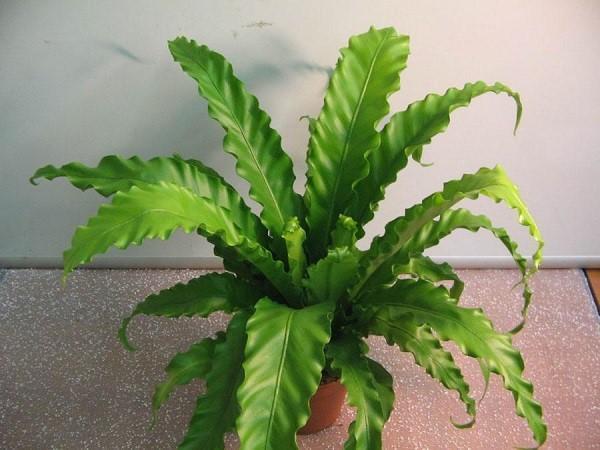We grow a large handsome South Asian Asplenium
 Among the many species of Asplenium, it is worth paying attention to the South Asian fern. This rather large plant can often be found in office buildings and even in private houses and apartments.
Among the many species of Asplenium, it is worth paying attention to the South Asian fern. This rather large plant can often be found in office buildings and even in private houses and apartments.
In nature, the bush grows on fallen trees, and its homeland is Eastern Australia.
Description of the variety
The plant is an epiphyte and is a large, dense rosette in the form of a funnel with large leaves. The leaf plate grows up to one and a half meters in length, and does not exceed 20 cm in width. It is straight, attached to the socket with a short petiole and expands upward. The edges of the leaves are slightly wavy, since they are slightly tucked along the entire length of the central vein.
The fern root system is covered with small scales. It is small and short, but thick and forms a lot of adventitious roots, thanks to which it is firmly fixed and acquires a stable vertical position.
Care features
Asplenium South Asian - one of the most persistent species of ferns and in order to destroy it with improper care, you still need to try. However, there are some nuances that you should still pay attention to when growing such a fern. These include:
- Abundant watering... The variety is very, very hygrophilous, so it should be watered regularly, avoiding a situation where the soil in the pot becomes a dense dry lump.
- Dust removal... Large leaves accumulate a lot of dust, so it is important to periodically wipe them with a damp sponge or rinse them off under running water.
- Good drainage... Despite the love for water, asplenium will react to constant stagnation of moisture with immediate decay, therefore the presence of a drainage layer in the flowerpot is a prerequisite, as well as regular emptying of the sump from its excess.
- Nutrient dressing... In order for the plant to actively grow new leaves, and the existing ones remain juicy and green, it should be fertilized. This fern is especially fond of organic substances, but also reacts well to complex preparations. The period for feeding is the same as for other plants, that is, from spring to autumn. It should be noted that fertilization can only be applied to wet soil.
Like all Asplenium varieties, the South Asian variety prefers shady locations, but it is one of the few that can be exposed to the sun.